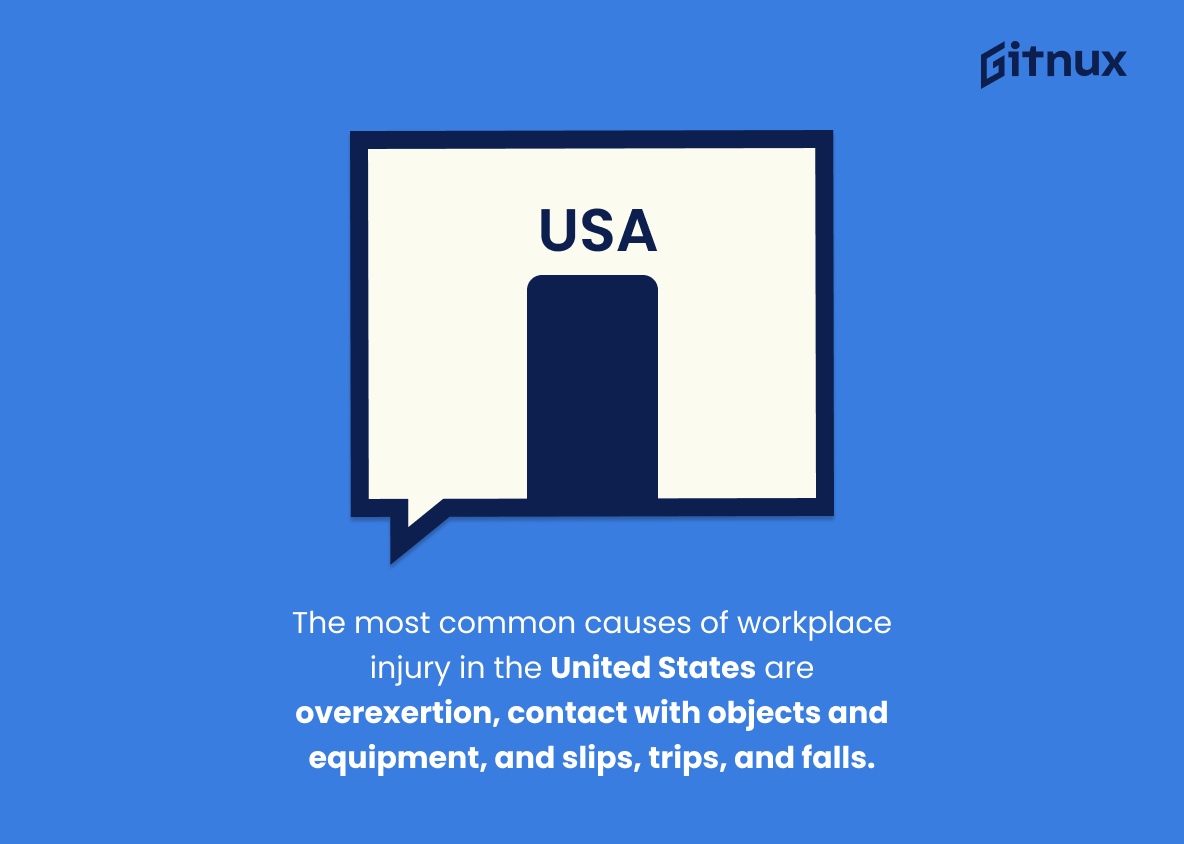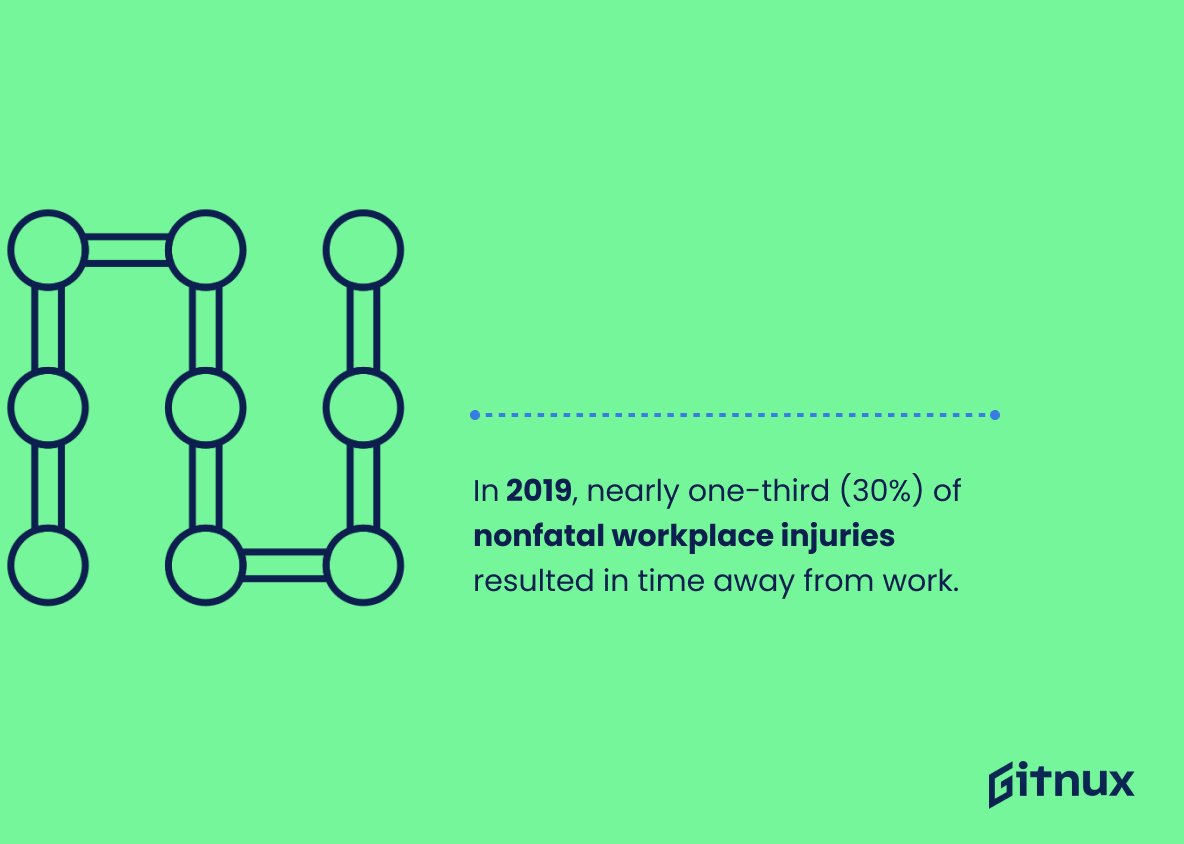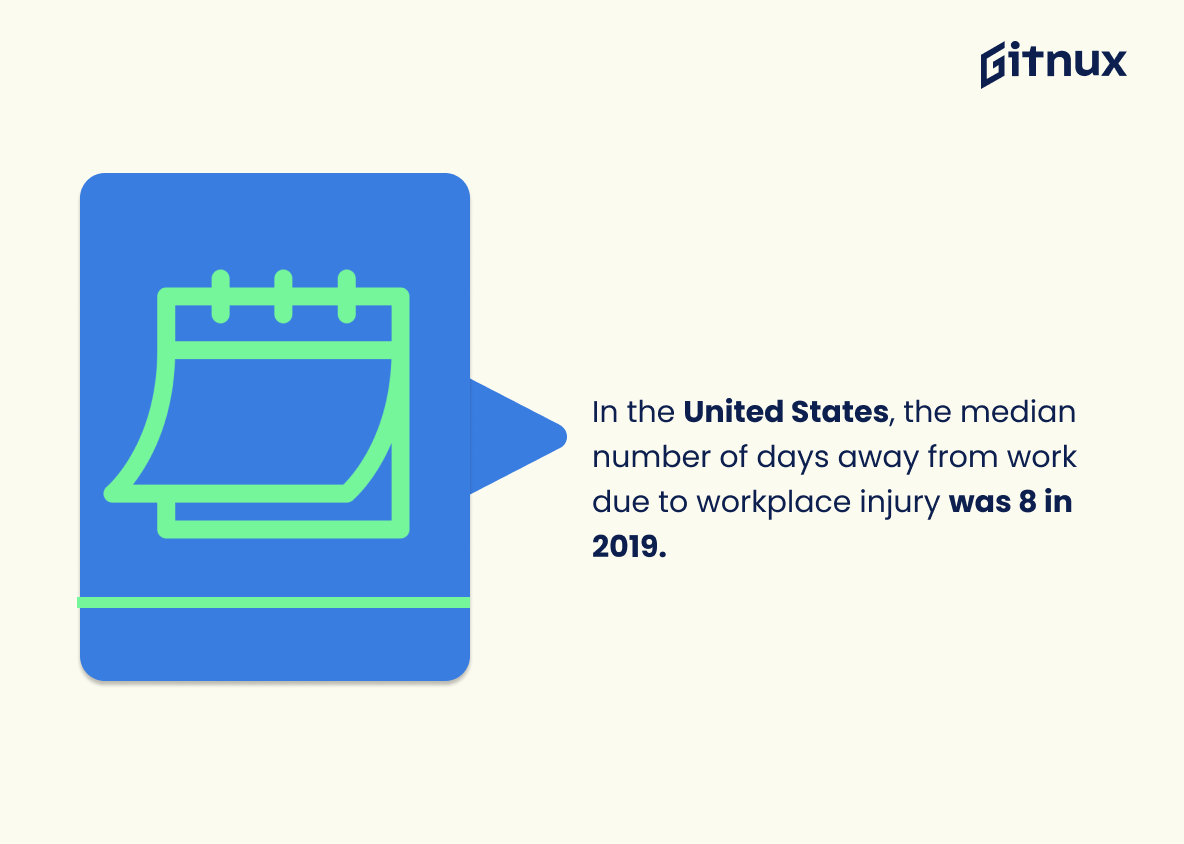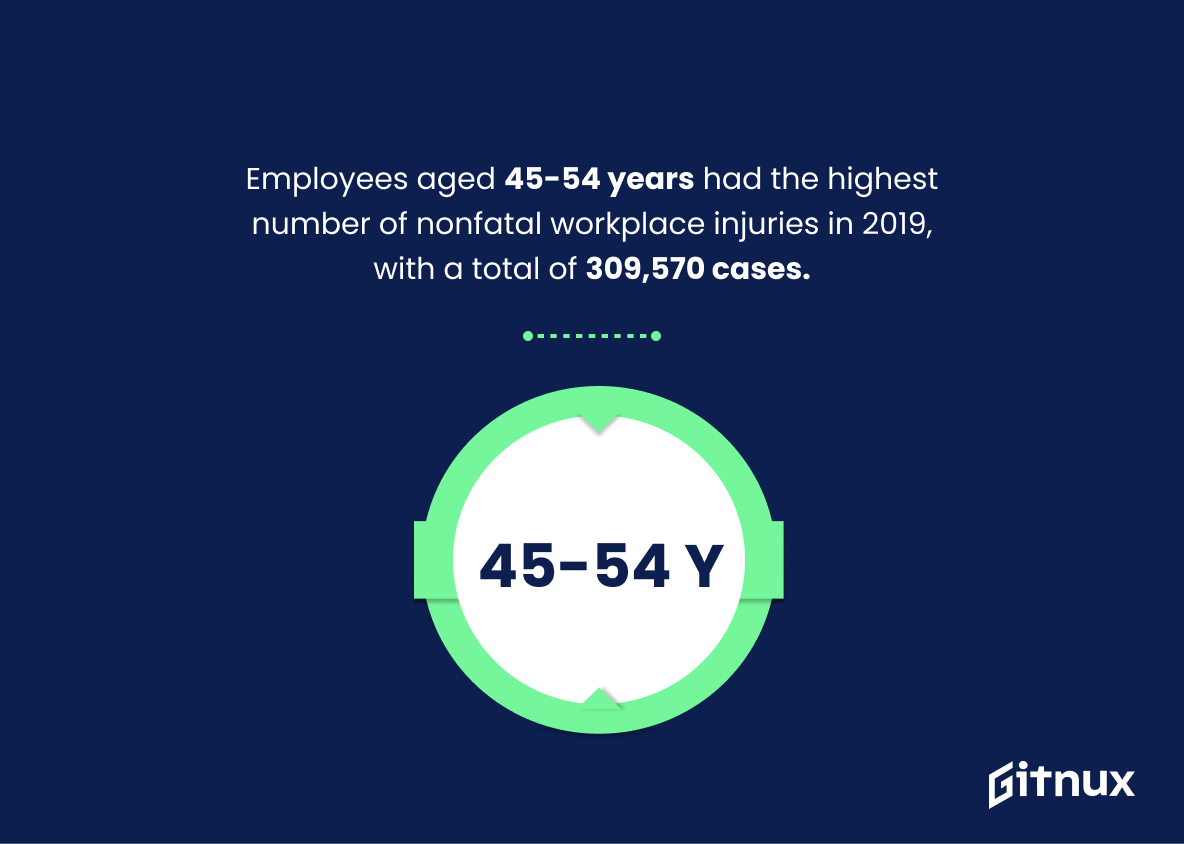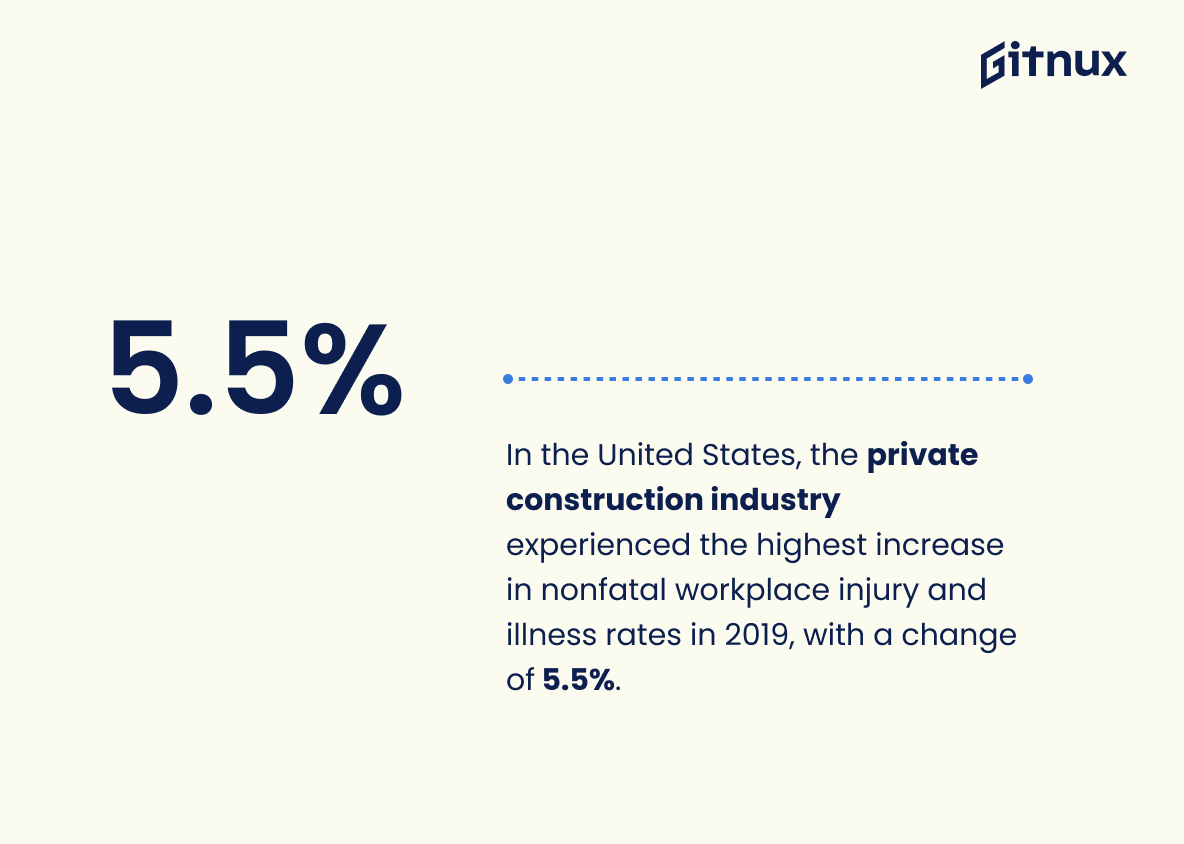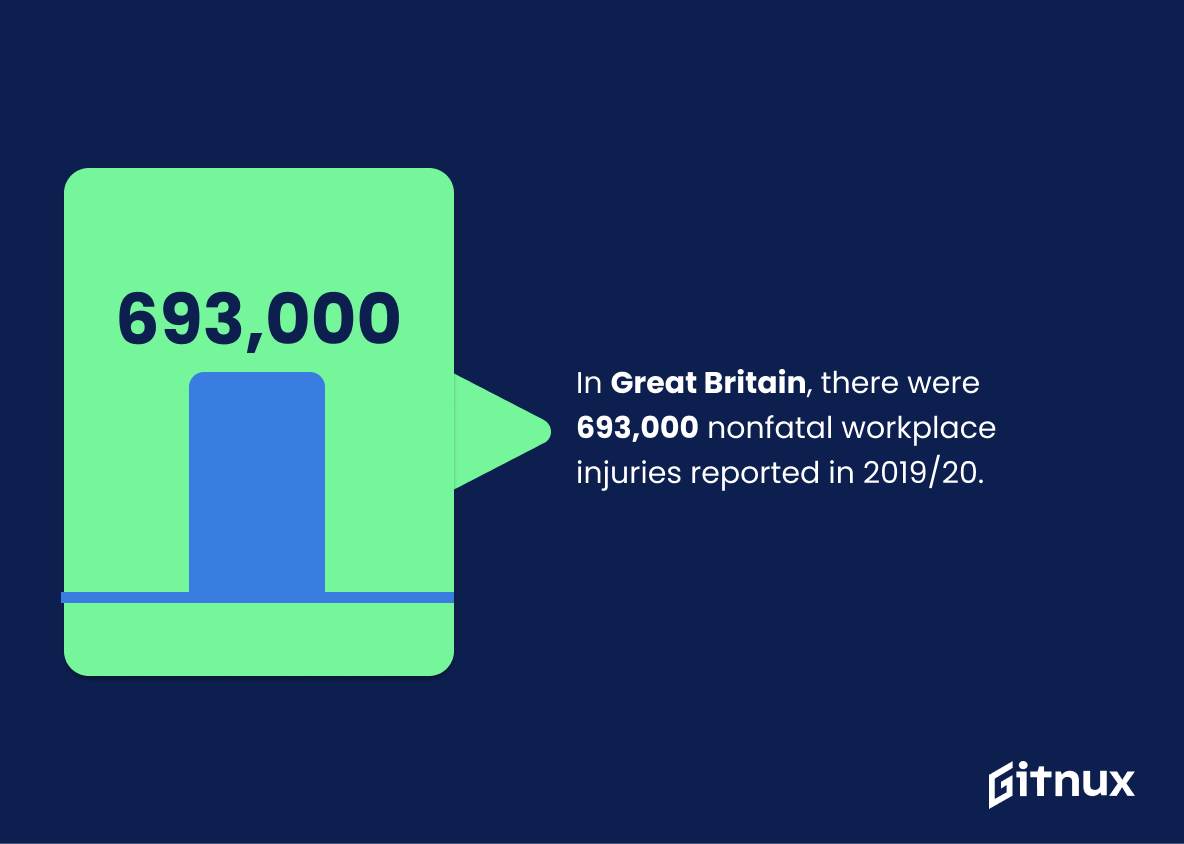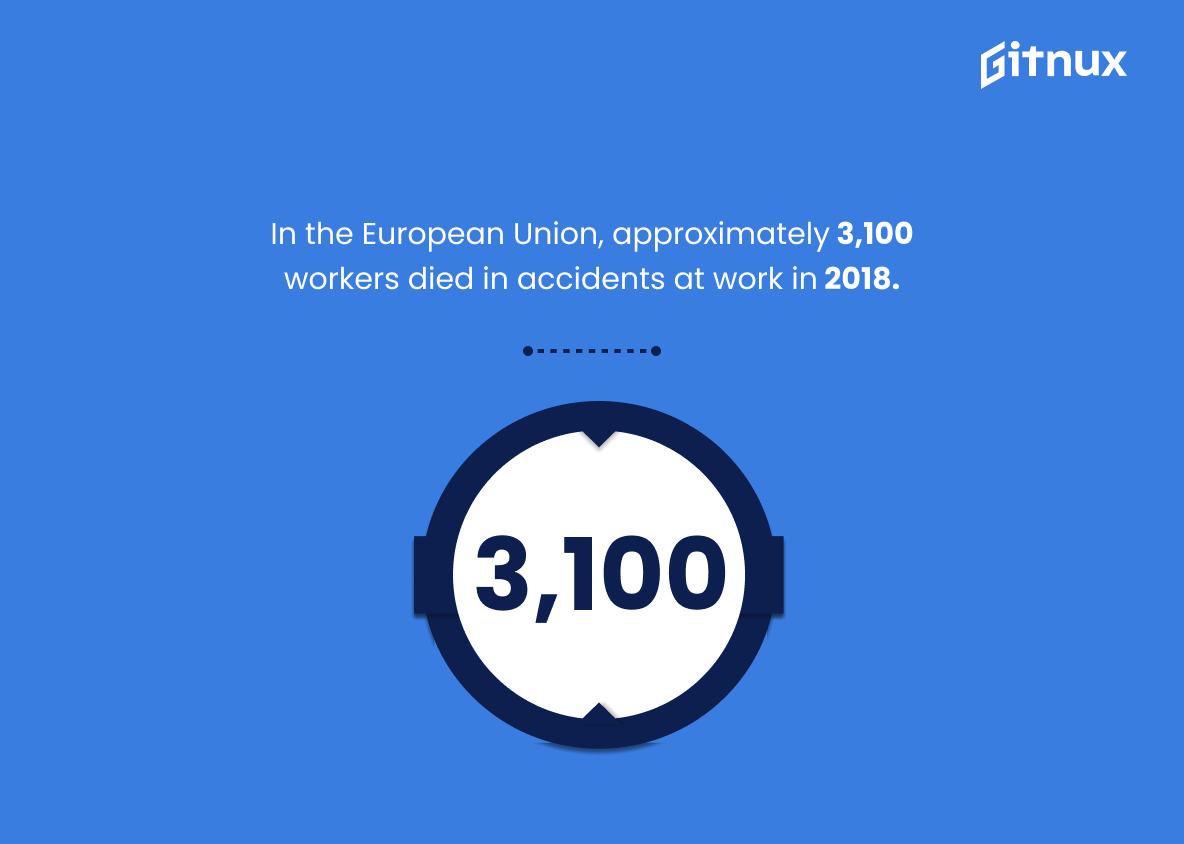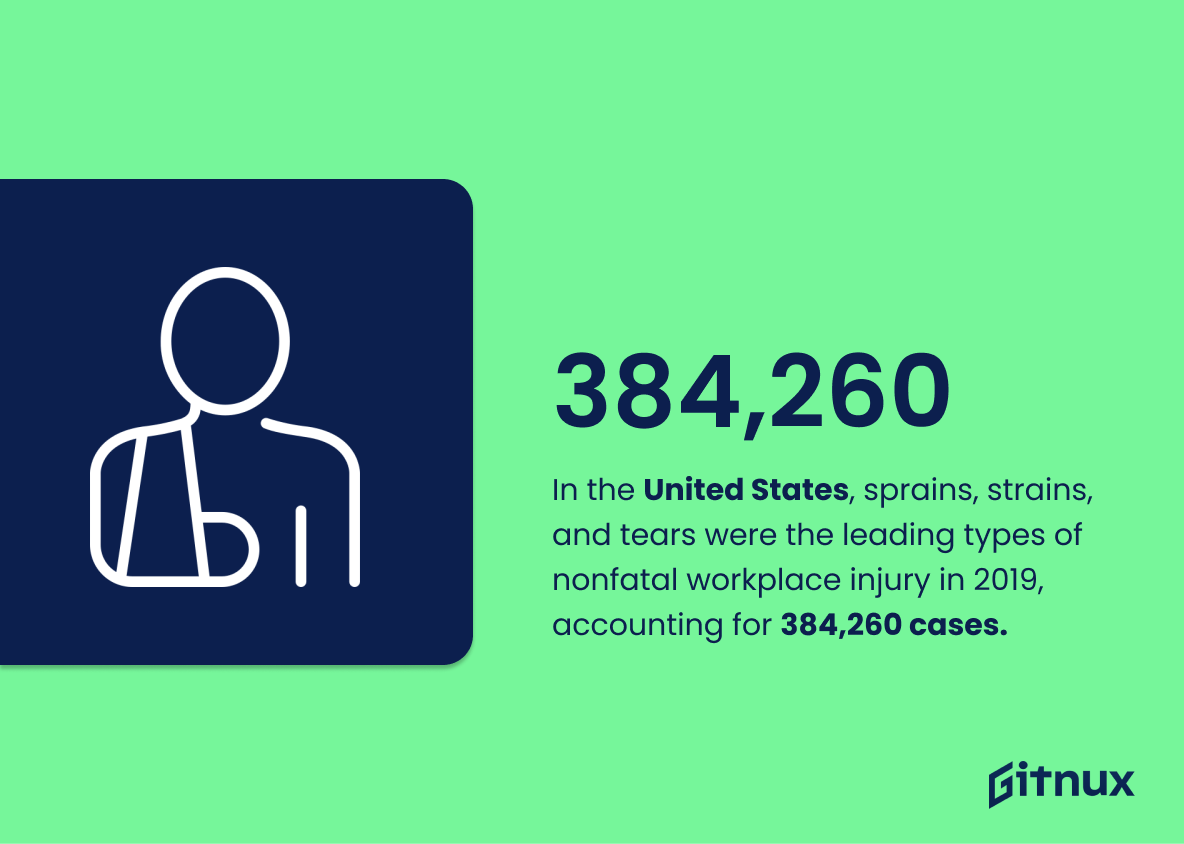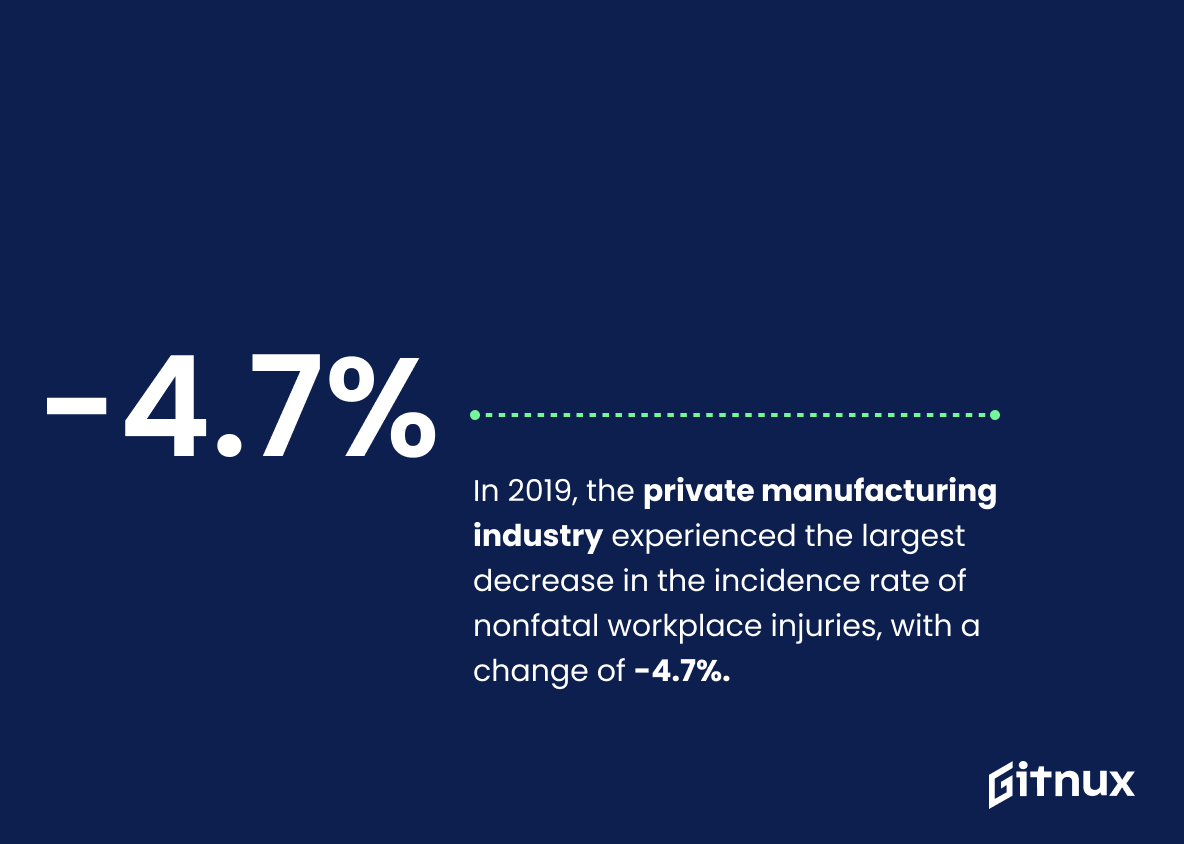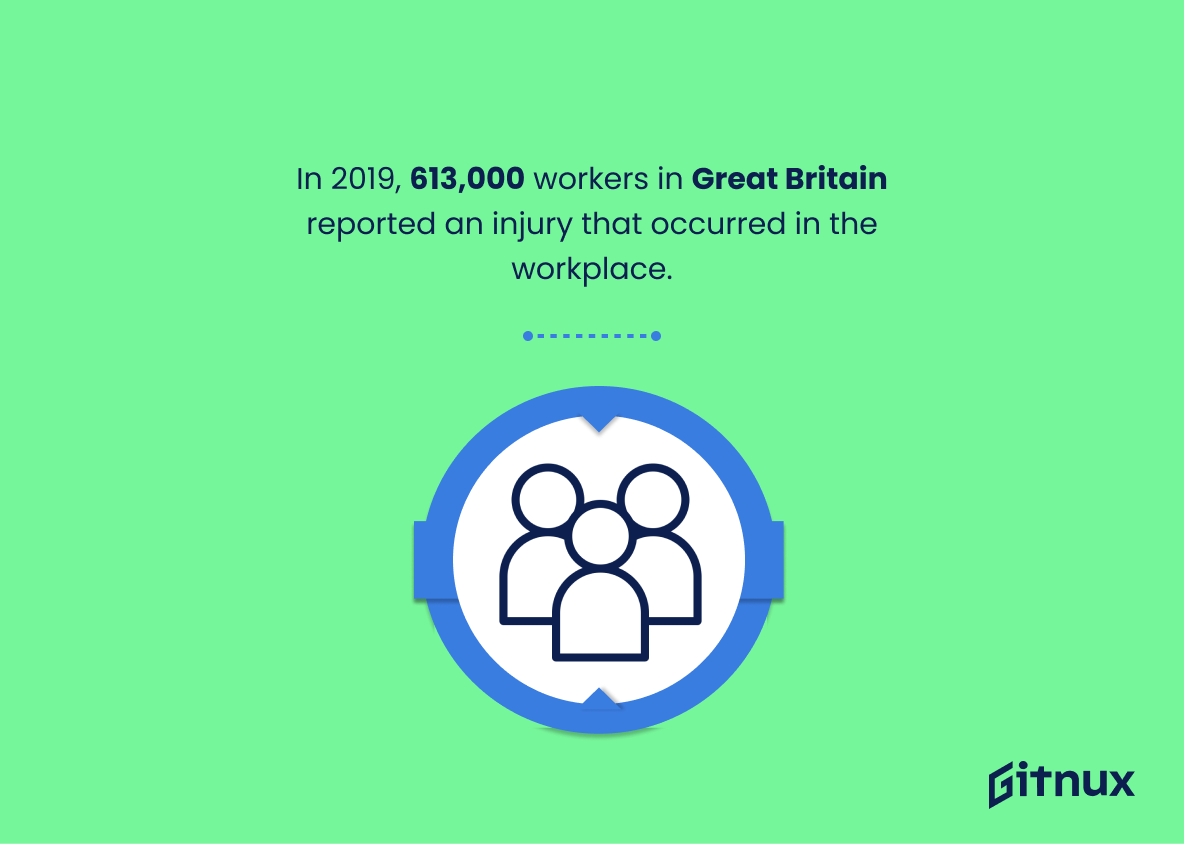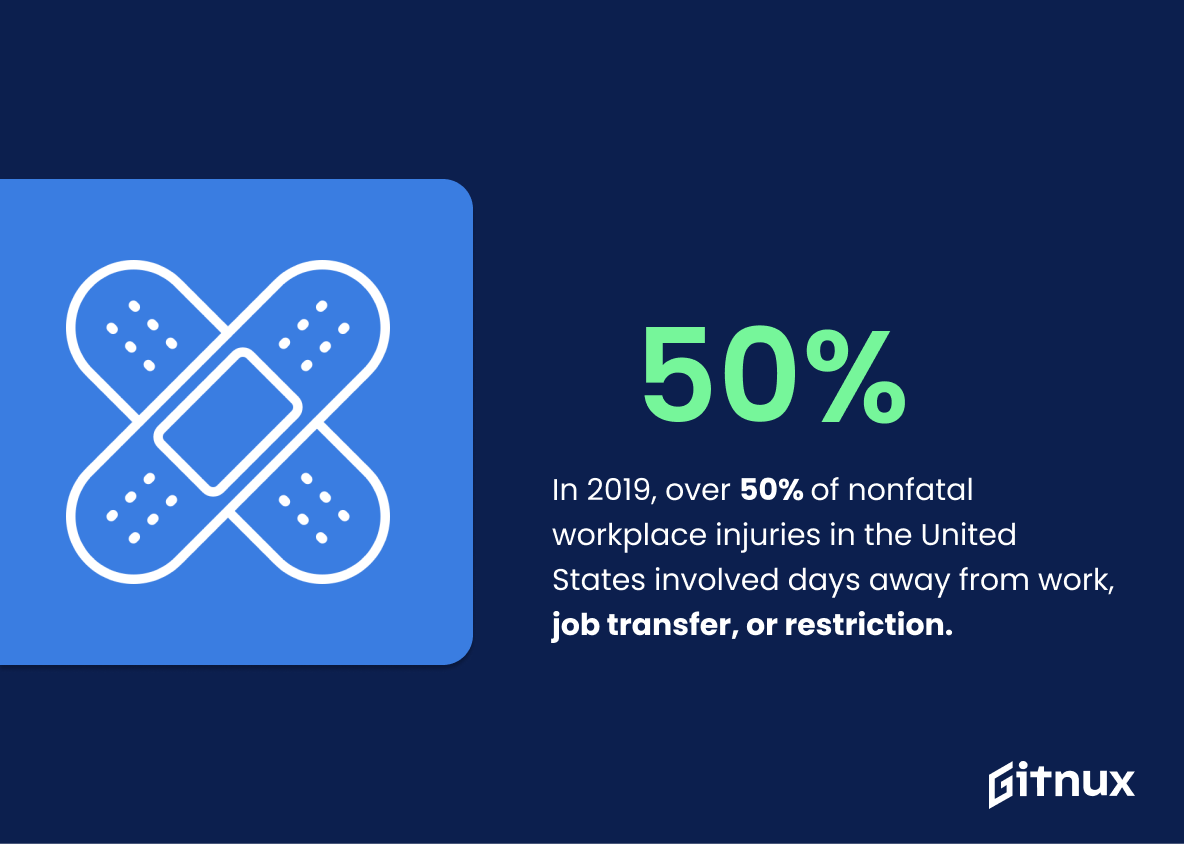Workplace injuries and illnesses are a serious issue that can have long-lasting impacts on workers, their families, employers, and the economy. According to data from the U.S. Bureau of Labor Statistics (BLS), in 2019 there were approximately 2.8 million nonfatal workplace injuries and illnesses reported in the United States alone – with an incidence rate for total recordable cases at 2.8 per 100 full-time equivalent workers – resulting in estimated costs of $171 billion dollars annually across all industries combined. In Canada, over 240,000 accepted claims for lost time due to a workplace injury occurred during this same period; while Great Britain saw 693,000 nonfatal workplace injuries reported throughout 2019/20; Australia experienced 107335 serious worker’s compensation claims between 2017-18; and 3100 deaths related to accidents at work happened within European Union countries during 2018 alone.
The most common causes of these incidents include overexertion or contact with objects or equipment as well as slips trips & falls – which accounted for nearly one third (30%) of all cases involving days away from work – followed by sprains strains & tears which made up 384 260 instances overall according to BLS statistics released last year 2020 . Males aged 45–54 years had highest number 309 570 cases whilst those who had less than 1 year service experience 341 180 incidences respectively . Private construction industry recorded 5 5% increase whereas private manufacturing sector witnessed 4 7% decrease compared other sectors when it comes down rates associated such events . Retail trade transportation warehousing topped list terms both numbers days away job transfer restriction involved each incident respectively
Workplace Injury Statistics Overview
In 2019, the total cost of workplace injuries and illnesses in the United States was estimated to be $171 billion.
This staggering statistic serves as a stark reminder of the immense financial burden that workplace injuries and illnesses can have on businesses and the economy as a whole. It is a sobering reminder of the importance of workplace safety and the need for employers to take proactive steps to protect their employees from harm.
The most common causes of workplace injury in the United States are overexertion, contact with objects and equipment, and slips, trips, and falls.
This statistic is a crucial reminder of the importance of workplace safety. Overexertion, contact with objects and equipment, and slips, trips, and falls are all preventable hazards that can lead to serious injury. Knowing the most common causes of workplace injury can help employers and employees take the necessary steps to reduce the risk of injury in the workplace. This knowledge can help create a safer and healthier work environment for everyone.
In 2019, nearly one-third (30%) of nonfatal workplace injuries resulted in time away from work.
This statistic is a stark reminder of the impact workplace injuries can have on employees. It highlights the fact that not only can workplace injuries be painful and debilitating, but they can also cause employees to miss out on valuable time at work. This can have a significant financial impact on employees, as well as a detrimental effect on their mental health. It is therefore essential that employers take steps to ensure that their workplaces are as safe as possible, in order to protect their employees from injury.
In the United States, the median number of days away from work due to workplace injury was 8 in 2019.
This statistic is a stark reminder of the prevalence of workplace injuries in the United States. It highlights the fact that, on average, employees are taking 8 days off work due to injury, which can have a significant impact on their lives and livelihoods. It is a reminder that workplace safety should be taken seriously and that employers should strive to create a safe working environment for their employees.
Employees aged 45-54 years had the highest number of nonfatal workplace injuries in 2019, with a total of 309,570 cases.
This statistic is a stark reminder of the importance of workplace safety, particularly for those in the 45-54 age range. It highlights the need for employers to take extra precautions to ensure the safety of their employees, as this age group is particularly vulnerable to workplace injuries. Additionally, it serves as a warning to those in this age group to be extra vigilant when it comes to their safety in the workplace.
In 2019, workers with less than one year of service experienced 341,180 nonfatal workplace injuries in the United States.
This statistic is a stark reminder of the dangers that workers face in the workplace, particularly those with less experience. It highlights the importance of providing adequate safety training and resources to all employees, regardless of their tenure. It also serves as a reminder that workplace injuries can happen to anyone, regardless of their experience level, and that employers must take steps to ensure the safety of their employees.
In 2019, males accounted for 61.1% of nonfatal workplace injuries and illnesses that resulted in days away from work.
This statistic is a stark reminder of the disproportionate risk that men face in the workplace. It highlights the need for employers to take proactive steps to ensure that all employees, regardless of gender, are provided with a safe and healthy work environment. It also serves as a reminder that workplace injury prevention is not just a women’s issue, but a critical issue for all workers.
In the United States, the private construction industry experienced the highest increase in nonfatal workplace injury and illness rates in 2019, with a change of 5.5%.
This statistic is a stark reminder of the importance of workplace safety. It highlights the need for employers to take proactive steps to ensure their employees are protected from injury and illness in the workplace. It also serves as a warning to other industries that they should not become complacent in their safety practices, as the private construction industry has experienced a significant increase in nonfatal workplace injury and illness rates.
In Great Britain, there were 693,000 nonfatal workplace injuries reported in 2019/20.
This statistic is a stark reminder of the prevalence of workplace injuries in Great Britain. It highlights the importance of taking steps to ensure the safety of employees in the workplace, as well as the need for employers to be aware of the risks and take appropriate measures to reduce the likelihood of injury.
In the European Union, approximately 3,100 workers died in accidents at work in 2018.
This statistic is a stark reminder of the tragic consequences of workplace injuries. It serves as a reminder that workplace safety should be taken seriously, and that employers should take all necessary steps to ensure the safety of their employees. It also highlights the importance of having proper safety protocols in place, as well as the need for workers to be aware of the risks associated with their job.
In the United States, sprains, strains, and tears were the leading types of nonfatal workplace injury in 2019, accounting for 384,260 cases.
This statistic is a stark reminder of the prevalence of workplace injuries in the United States. It highlights the need for employers to take proactive steps to ensure the safety of their employees and to reduce the risk of sprains, strains, and tears in the workplace. It also serves as a reminder of the importance of providing adequate training and safety protocols to employees to help prevent such injuries.
The agriculture, forestry, and fishing industry had the highest incidence rate of nonfatal workplace injuries in the United States in 2019, with 4.6 cases per 100 full-time equivalent workers.
This statistic is a stark reminder of the dangers that workers in the agriculture, forestry, and fishing industry face on a daily basis. It highlights the need for employers to prioritize safety in these industries and for workers to be aware of the risks they may encounter. It also serves as a call to action for policy makers to create regulations that protect workers in these industries from workplace injuries.
In 2019, the private manufacturing industry experienced the largest decrease in the incidence rate of nonfatal workplace injuries, with a change of -4.7%.
This statistic is a testament to the progress made in the private manufacturing industry in terms of workplace safety. It shows that the industry is taking steps to reduce the number of nonfatal workplace injuries, which is a positive sign for the safety of employees. This statistic is an important reminder that workplace safety should be a priority for all industries, and that progress can be made when the right measures are taken.
In 2019, retail trade and transportation and warehousing were the top two sectors for nonfatal injury and illness cases with days away from work in the United States.
This statistic is a stark reminder of the importance of workplace safety in the retail trade and transportation and warehousing sectors. It highlights the need for employers to prioritize the health and safety of their employees, as these two sectors account for the highest number of nonfatal injury and illness cases with days away from work. It is essential that employers take the necessary steps to ensure that their employees are safe and protected from potential hazards in the workplace.
In 2019, 613,000 workers in Great Britain reported an injury that occurred in the workplace.
This statistic is a stark reminder of the prevalence of workplace injuries in Great Britain. It highlights the importance of taking steps to ensure the safety of workers in the workplace, as well as the need for employers to be aware of the risks and take appropriate measures to protect their employees.
In 2019, over 50% of nonfatal workplace injuries in the United States involved days away from work, job transfer, or restriction.
This statistic is a stark reminder of the prevalence of workplace injuries in the United States. It highlights the fact that a significant portion of nonfatal workplace injuries require employees to take time away from work, transfer to a different job, or be restricted in their duties. This is a clear indication that workplace safety should be a priority for employers and that more needs to be done to ensure the safety of employees.
Conclusion
Workplace injuries and illnesses are a serious issue that affects workers around the world. In 2019, there were approximately 2.8 million nonfatal workplace injuries and illnesses reported in the United States alone, with an incidence rate of 2.8 per 100 full-time equivalent workers. Canada had over 240,000 accepted claims for lost time due to a workplace injury in 2019 while Great Britain reported 693,000 nonfatal workplace injuries during this same period. The total cost of these incidents was estimated at $171 billion in the US alone and 3100 people died from work related accidents across Europe in 2018. Overexertion, contact with objects or equipment and slips trips or falls were found to be some of the most common causes of such incidents while sprains strains tears accounted for 384 260 cases within America itself last year . It is clear that more needs to be done by employers worldwide to ensure their employees’ safety on site as well as providing adequate compensation should any unfortunate incident occur
References
0. – https://www.ec.europa.eu
1. – https://www.bls.gov
2. – https://www.hse.gov.uk
3. – https://www.injuryfacts.nsc.org
ZipDo, cited June 2023: Workplace Injury Statistics

